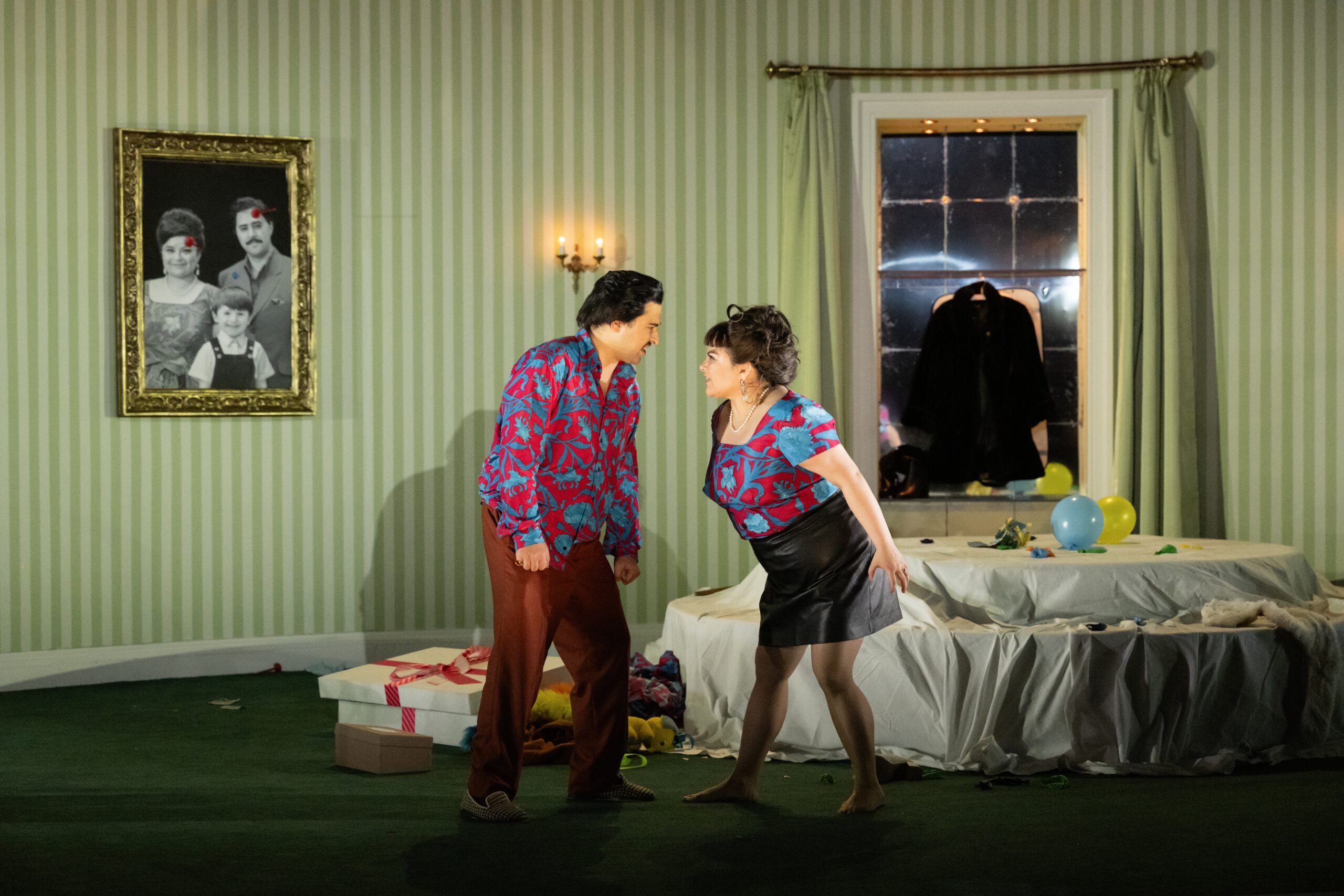Georg Philipp Telemann’s Pimpinone, first performed in 1725 as a comic intermezzo between the acts of Handel’s Tamerlano, is a sharp, witty examination of the dynamics of power and gender. The opera centers on the cunning maid, Vespetta, who outwits and marries her pompous employer, Pimpinone, ultimately reversing their relationship’s power structure. Though brief, Pimpinone remains a testament to Telemann’s mastery of musical characterization and his flair for humor, all while subtly critiquing societal norms.
Telemann, a prolific German composer of the Baroque period, was known for his ability to blend the high art of classical composition with light-hearted, accessible forms like the intermezzo. This piece, full of humor and irony, is a prime example of his capacity to balance wit with depth. In Pimpinone, Telemann showcases his knack for creating engaging, lively music that drives both the action and the emotional arcs of the characters.
The Royal Opera House’s new production — presented by the Jette Parker Artists at the Linbury Theatre — gives the opera a 1960s twist, and uses its compactness as an advantage. Director Sophie Gilpin’s concept reimagines Vespetta not as a conniving mastermind but as a young woman navigating a shifting power dynamic with greater ambiguity. Set across a single, ever-changing room, the production gently updates the character dynamics while retaining the original libretto, allowing for both reinterpretation and fidelity.
What emerges is a version that neither condemns nor entirely redeems its characters. Pimpinone may strut about with vanity and bluster, but the production never pushes him into a villainised caricature. Likewise, Vespetta’s ascent feels less like calculated manipulation and more like the natural progression of a woman adapting to her situation — and, ultimately, being absorbed into it.
A subtle moment when he gifts her a dress that matches his own shirt hints at a possible imbalance — a gesture that could suggest dominance disguised as affection. But in practice, it never quite reads as manipulative. Rather than a master of control, Pimpinone comes across as a man shaped by the expectations of his time. The production seems to aim for a critique of gendered power, yet what emerges is more ambivalent: neither character feels fully in charge. By the final scene — set five years later, with a family portrait replacing his solo image — the tone is one of resigned domesticity rather than triumph or defeat. It’s less a power play than a portrait of two people navigating roles they were handed, not necessarily ones they chose.
Grisha Martirosyan is a standout as Pimpinone. His vocal control, comic timing, and sheer presence fill the stage with energy and warmth. It’s a role that could tip into buffoonery, but Martirosyan balances humour with a rounded, believable character. His upcoming engagements with the Royal Opera House include roles such as Baron Douphol in La traviata (September 2024), Hermann and Schlemil in The Tales of Hoffmann (November–December 2024), and Moralès in Carmen (April–July 2025). These assignments reflect the company’s confidence in his versatility and growing prominence.
Isabela Díaz’s voice works well alongside Martirosyan’s, perhaps needing a variety of tone to achieve a more dynamic performance. She plays the naivety of her character effectively, capturing the innocence that gradually fades as the story progresses.
Staging is handled with flair and wit. The use of costumes — especially Vespetta’s maid’s outfit that transforms into a wedding dress — cleverly signals shifts in identity. The set is dynamic, with quick changes executed smoothly: props fall from the ceiling, a raised platform becomes a focal point, and visual gags are delivered with just enough subtlety to avoid overstatement. The hour-long runtime (performed without an interval) keeps the energy brisk, and the pacing never lags.
What’s particularly commendable is the choice to stage Pimpinone at all. In a cultural climate where the same handful of operas dominate schedules, it’s refreshing to see the Royal Opera House giving space to a lesser-known Baroque work. This kind of programming not only supports musical discovery but helps audiences experience the full range of the repertoire.
The Jette Parker Artists Programme continues to prove its value in exactly this kind of setting — offering young singers, conductors, and creatives the chance to take risks, build chemistry, and be seen by London audiences. More institutions across the arts should follow this example: nurturing emerging talent through real-world, high-quality performance opportunities. In the process, we all benefit — with evenings like this one, where ambition and freshness combine to give new life to something old.

